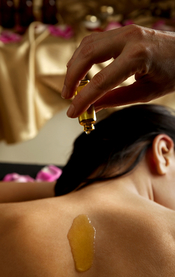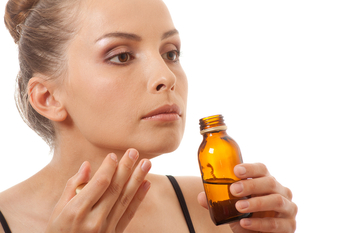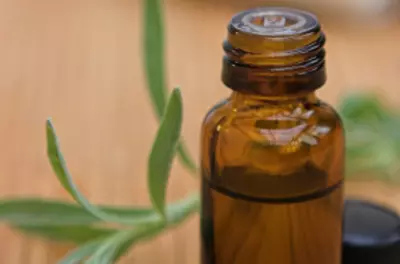Aromatherapy

How Do Essential Oils Work?
Essential oils enter the body in three ways. They can be:
✔ Applied to the skin
✔ Inhaled
✔ Ingested
How does skin application work?
 Essential oils can be applied topically to the skin. Common examples include applying a blend that contains black pepper (Piper nigrum) or ginger (Zinziber officinalis) essential oil to reduce arthritis pain and improve flexibility, or applying German Chamomile (Matricaria recutita) essential oil to treat eczema.
Essential oils can be applied topically to the skin. Common examples include applying a blend that contains black pepper (Piper nigrum) or ginger (Zinziber officinalis) essential oil to reduce arthritis pain and improve flexibility, or applying German Chamomile (Matricaria recutita) essential oil to treat eczema.
How does this work? Our skin is somewhat permeable. The active chemicals in essential oils are absorbed just like the ingredients in common pharmaceuticals such as hormone replacement therapy cream and nicotine patches.
Factors that increase skin absorption
Different factors can affect the absorption of essential oils through the skin. If you massage the area first, it will increase circulation to that area, thereby causing an increase in absorption of essential oils. Heat will likewise increase circulation and thus enhance absorption.
Some researchers report that essential oils may be more readily absorbed from skin locations with greater concentrations of sweat glands and hair follicles, such as the genitals, head, soles, palms, and armpits (Battaglia, 2003).
How do I inhale essential oils?
 Another way that essential oils enter the body is inhalation through the nose or mouth. Common examples include inhaling eucalyptus (Eucalyptus globules, E. radiate, or E. smithii) essential oil when you have a cough or inhaling peppermint (Mentha piperita) essential oil to reduce fatigue or nausea. (Note: Often, essential oils are put into a diffuser for inhalation. The section How Do I Choose and Use Essential Oils? describes this in more detail.)
Another way that essential oils enter the body is inhalation through the nose or mouth. Common examples include inhaling eucalyptus (Eucalyptus globules, E. radiate, or E. smithii) essential oil when you have a cough or inhaling peppermint (Mentha piperita) essential oil to reduce fatigue or nausea. (Note: Often, essential oils are put into a diffuser for inhalation. The section How Do I Choose and Use Essential Oils? describes this in more detail.)
The olfactory system
The olfactory system includes all physical organs or cells relating to, or contributing to, the sense of smell. When we inhale through the nose, airborne molecules interact with the olfactory organs and, almost immediately, the brain.
Molecules inhaled through the nose or mouth are also carried to the lungs and interact with the respiratory system. Thus, inhaled essential oils can affect the body through several systems and pathways.
Interaction with the limbic system (emotional brain)
During inhalation, odor molecules travel through the nose and affect the brain through a variety of receptor sites, one of which is the limbic system, which is commonly referred to as the "emotional brain."
The limbic system is directly connected to those parts of the brain that control heart rate, blood pressure, breathing, memory, stress levels, and hormone balance (Higley & Higley, 1998). This relationship helps explain why smells often trigger emotions. Knowing this, we can hypothesize how inhalation of essential oils can have some very profound physiological and psychological effects!
Do people ingest essential oils?
The third way that essential oils enter the body is by ingestion (swallowing).
![]() Oral ingestion of essential oils is NOT recommended for the general public because a great deal of essential oils knowledge and expertise is necessary for safe practice.
Oral ingestion of essential oils is NOT recommended for the general public because a great deal of essential oils knowledge and expertise is necessary for safe practice.
The ingestion of essential oils is not common practice in the US. In France, it is more common, but only when specially trained physicians and pharmacists prescribe and dispense them. There are several reasons for caution, including the following:
- Some essential oils can be toxic to the liver or kidneys when ingested.
- Chemical breakdown of essential oils during gastric processing can change the effects.
- There could be potential drug interactions. (Tisserand and Balacs, 1995; Schnaubelt, 1999)
"Smell is a potent wizard that transports us across thousands of miles and all the years we have lived."
Two ways to learn more

University of Minnesota online course
The University of Minnesota offers a 1-credit fully online course that provides students with an overview of essential oil therapy and current aromatherapy practices in clinical settings.

Coursera
This is a fully online 15-hour course on the clinical use of essential oils. The course provides an overview of essential oil therapy and current aromatherapy practices. It gives you the skills to cut through the misinformation to safely and appropriately use aromatherapy.
Battaglia, S., (2003). The complete guide to aromatherapy. Brisbane, Queensland, Australia: The International Centre of Aromatherapy.
Higley, C., Leatham, P. & Higley, A. (1998). Aromatherapy A-Z. Hay House.
Price, S. & Price, L. (2007). Aromatherapy for health professionals, 3rd Ed. Philadelphia: Churchill Livingstone Elsevier.
Schnaubelt, K. (1999). Medical aromatherapy: Healing with essential oils. Berkeley, CA: Frog, Ltd.
Tisserand, R. & Balacs, T. (1995). Essential oil safety: A guide for health professionals. Edinburgh: Churchill Livingstone.















